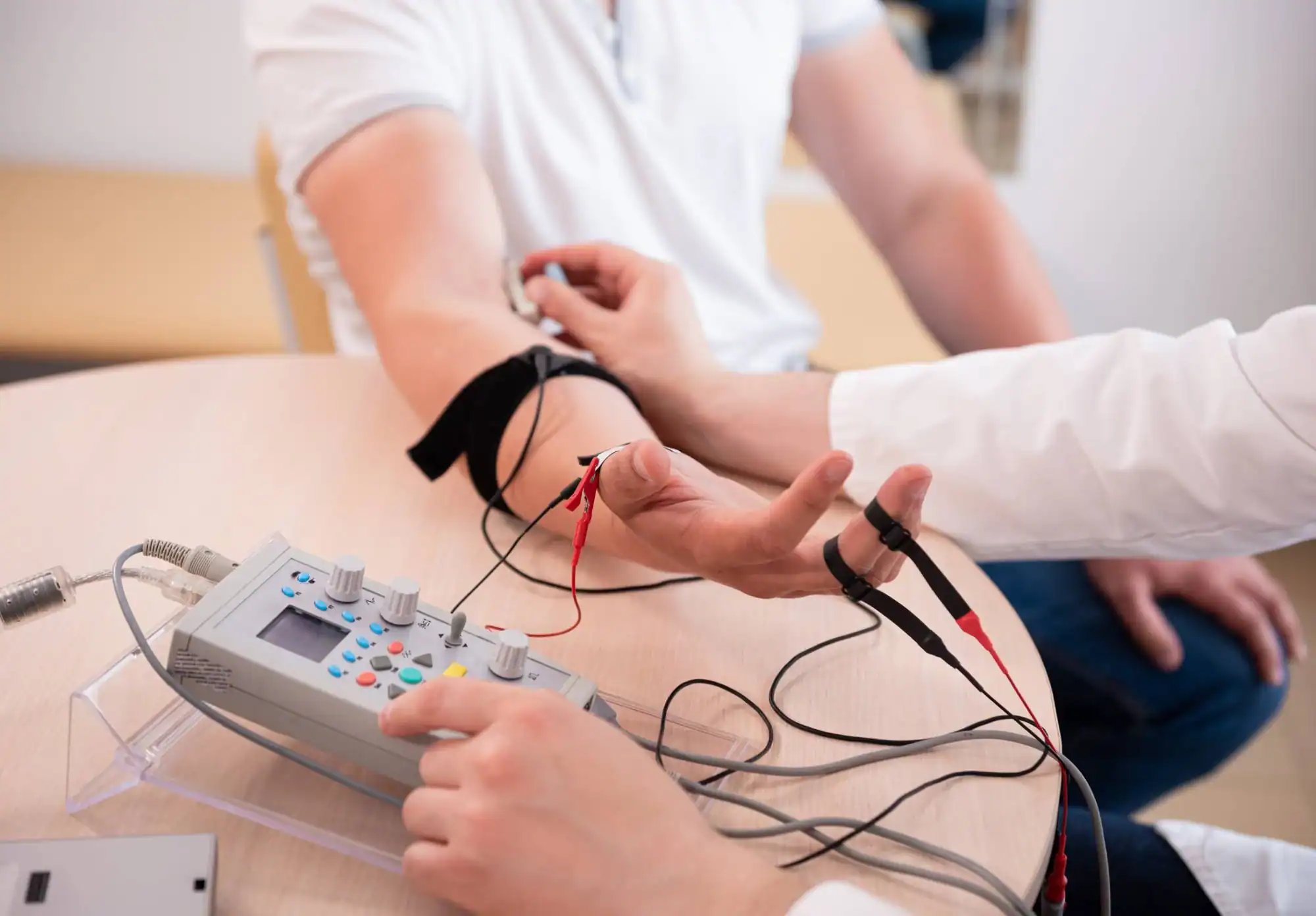Advanced electromyography testing that pinpoints exactly what’s causing your numbness, tingling, or muscle weakness.
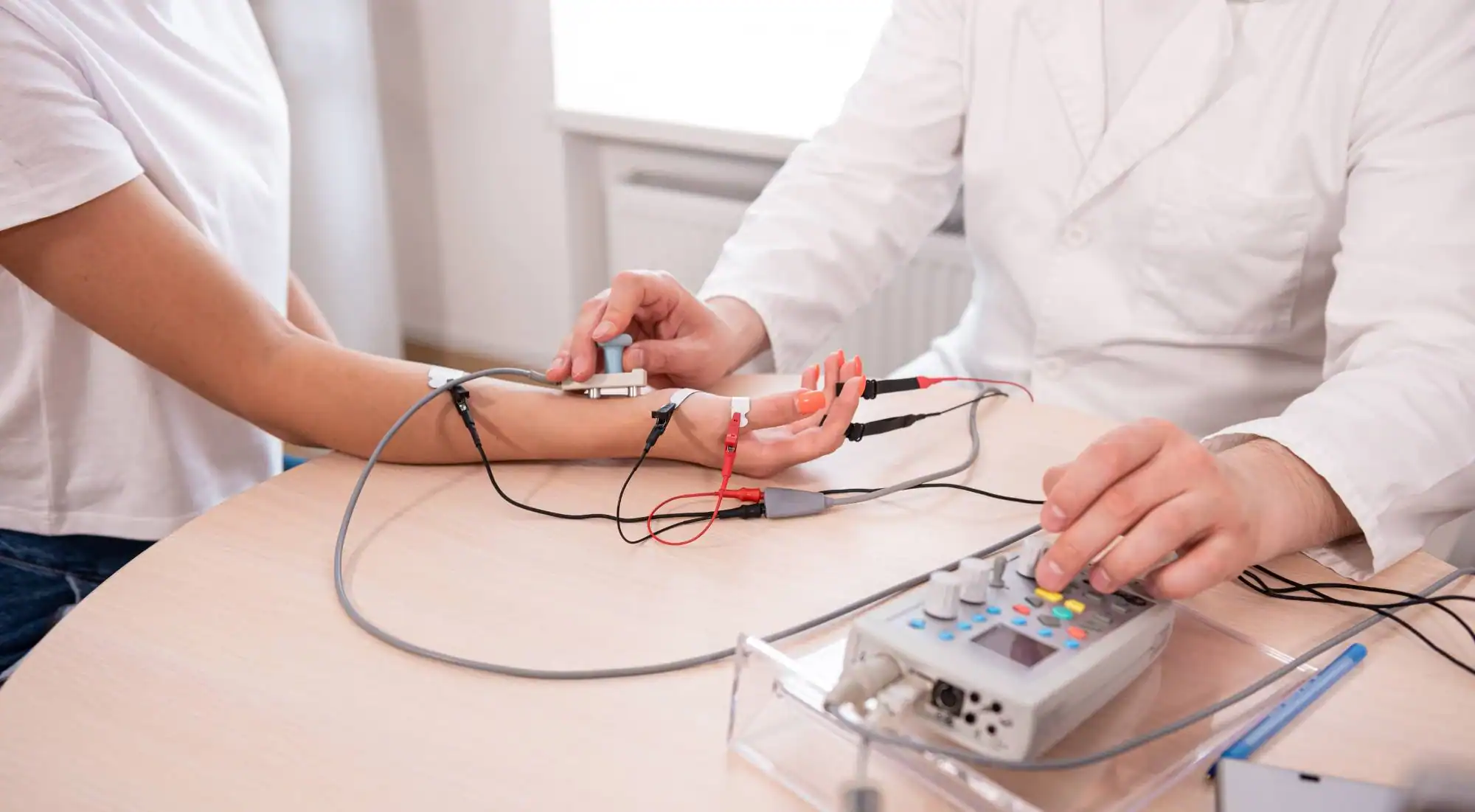
Reviews
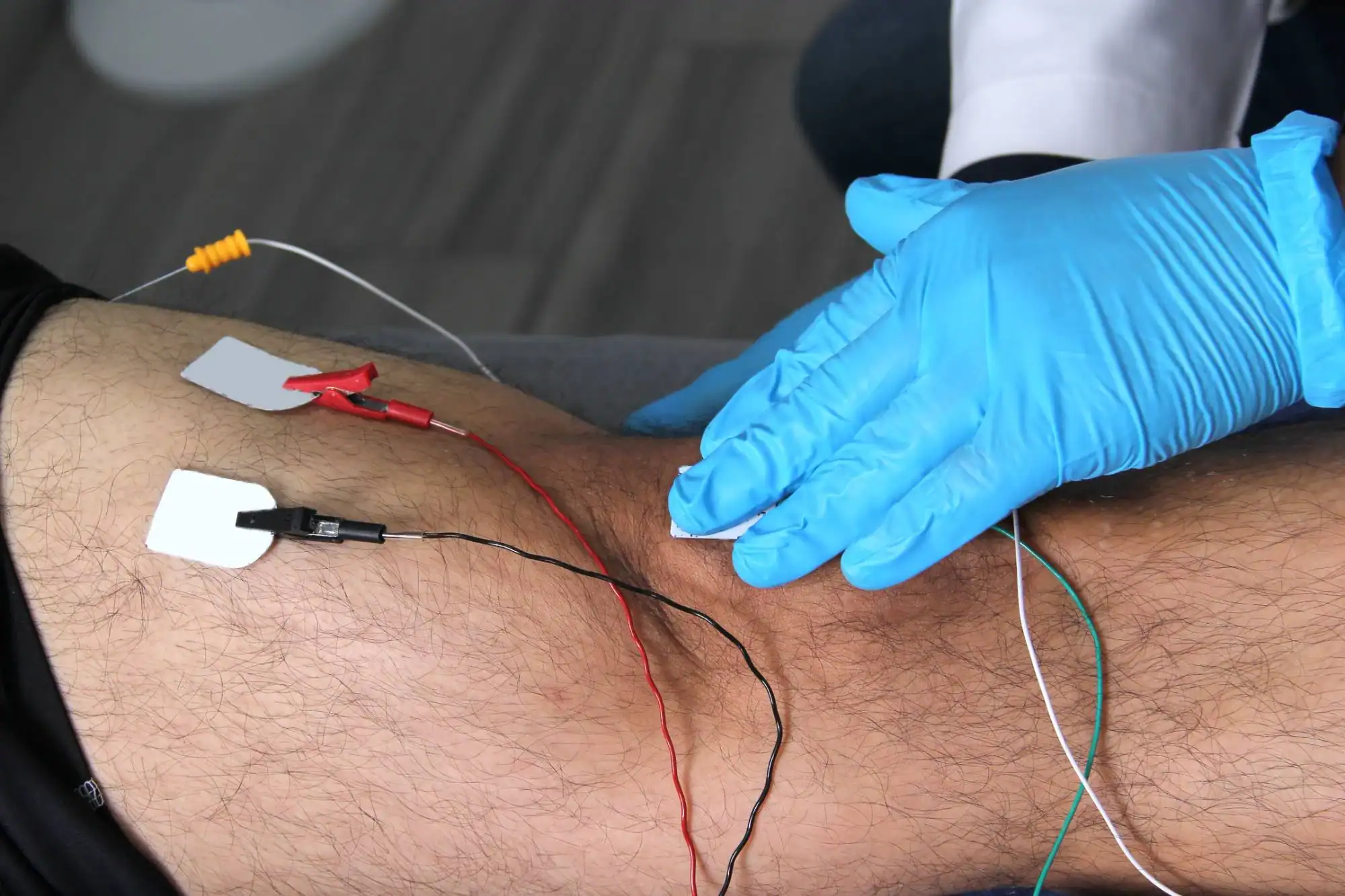
You’ve been dealing with nerve pain, numbness, or muscle weakness for weeks or months. Maybe you’ve had other tests that didn’t give you clear answers. EMG testing changes that.
This diagnostic test measures the electrical activity in your muscles and nerves. It shows us exactly where the problem is – whether it’s a pinched nerve, muscle disorder, or something else entirely. You’ll walk out with concrete results, not more guessing.
No more wondering if the pain is in your head. No more vague explanations. Just clear, measurable data about what’s happening in your body and what we can do about it.
We’ve been providing advanced neurological diagnostics to Windsor Terrace and Brooklyn residents for years. Our board-certified specialists use the latest EMG and nerve conduction study technology to deliver accurate results.
We’re not a general practice trying to do everything. We focus specifically on spine and nerve conditions, which means we see these problems every day. When you need answers about nerve function, you want someone who knows exactly what they’re looking for.
Our Windsor Terrace location makes it convenient for Brooklyn residents to get the specialized testing they need without traveling to Manhattan.
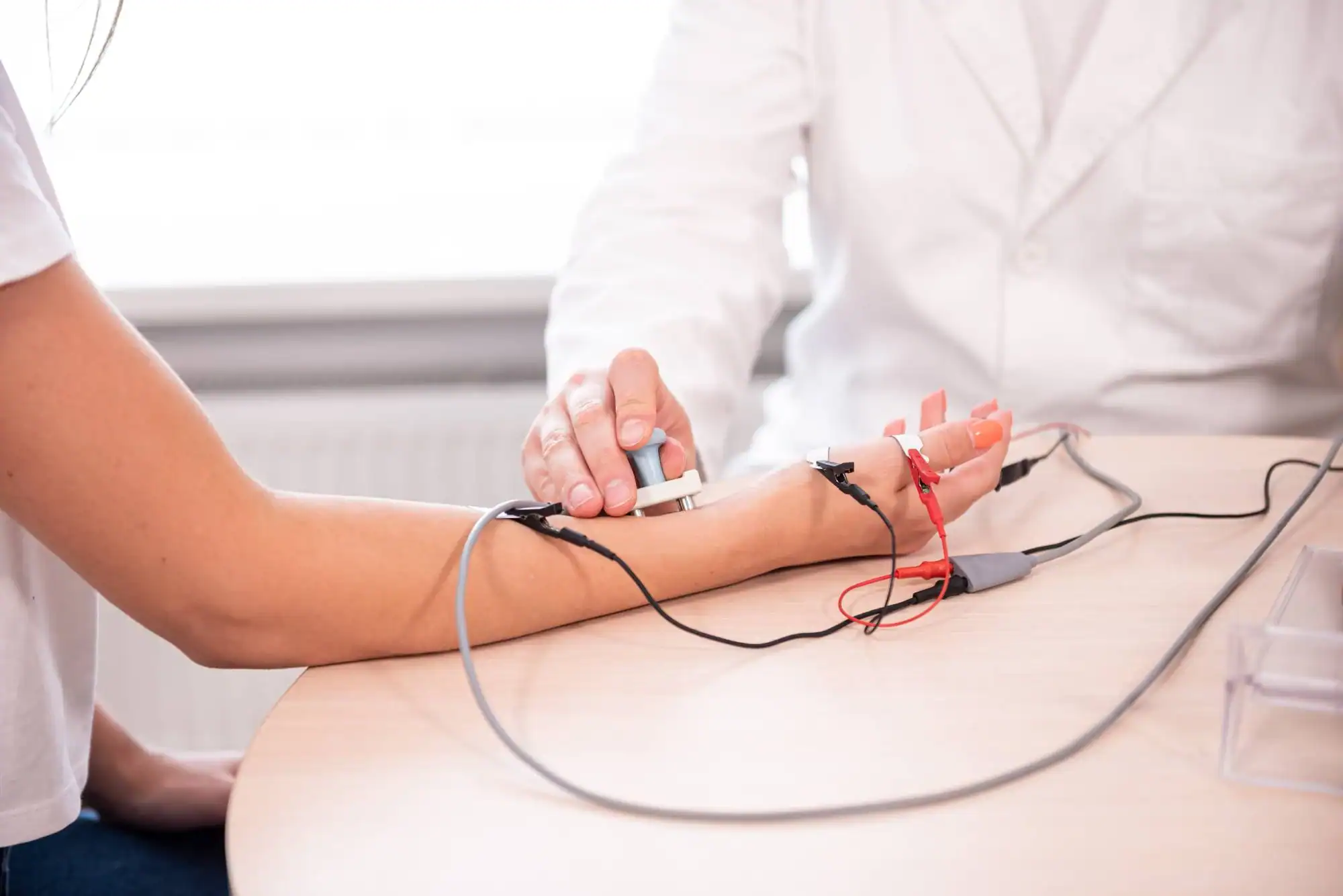
EMG testing has two parts: nerve conduction studies and electromyography. The nerve conduction study comes first. We place small electrodes on your skin and send mild electrical pulses to measure how fast and strong your nerve signals are.
Then comes the EMG portion. We insert a thin needle electrode into specific muscles to measure their electrical activity. You’ll contract and relax the muscle while we record the signals. This shows us if the muscle itself is healthy or if there’s nerve damage affecting it.
The entire process takes 30-60 minutes depending on which nerves and muscles we’re testing. You’ll get your results immediately, and we’ll explain exactly what they mean for your condition and treatment options.
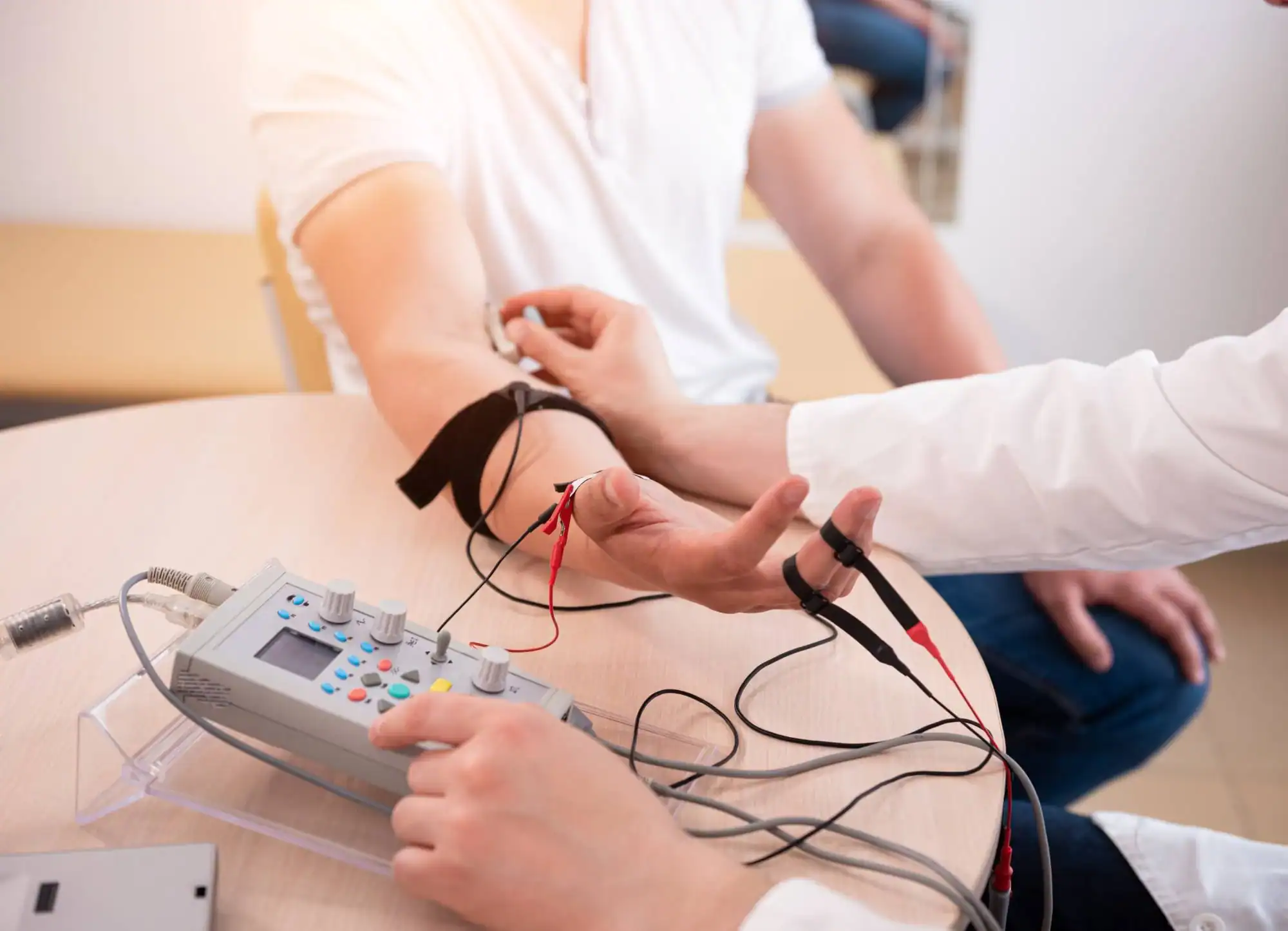
Ready to get started?
Our EMG testing evaluates conditions like carpal tunnel syndrome, sciatica, herniated disc nerve compression, peripheral neuropathy, and muscle disorders. We test both upper and lower extremities, depending on your symptoms.
You’ll receive a detailed report showing nerve conduction velocities, muscle response patterns, and any abnormalities we find. This isn’t just data – it’s the roadmap for your treatment plan. Whether you need physical therapy, medication, injections, or surgery, the EMG results guide every decision.
Most insurance plans cover EMG testing when medically necessary. We handle the pre-authorization process and work directly with your insurance company to minimize your out-of-pocket costs.
